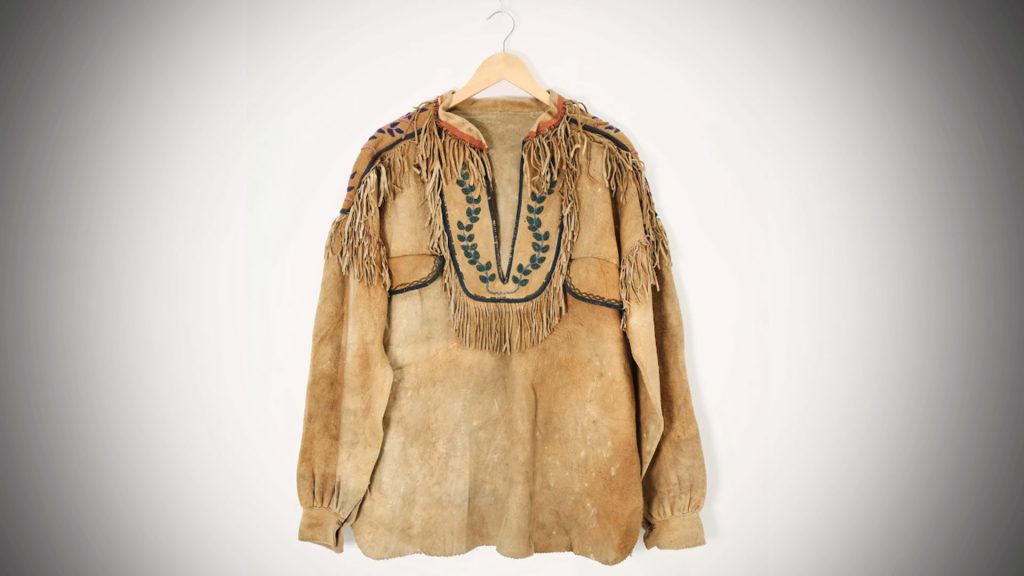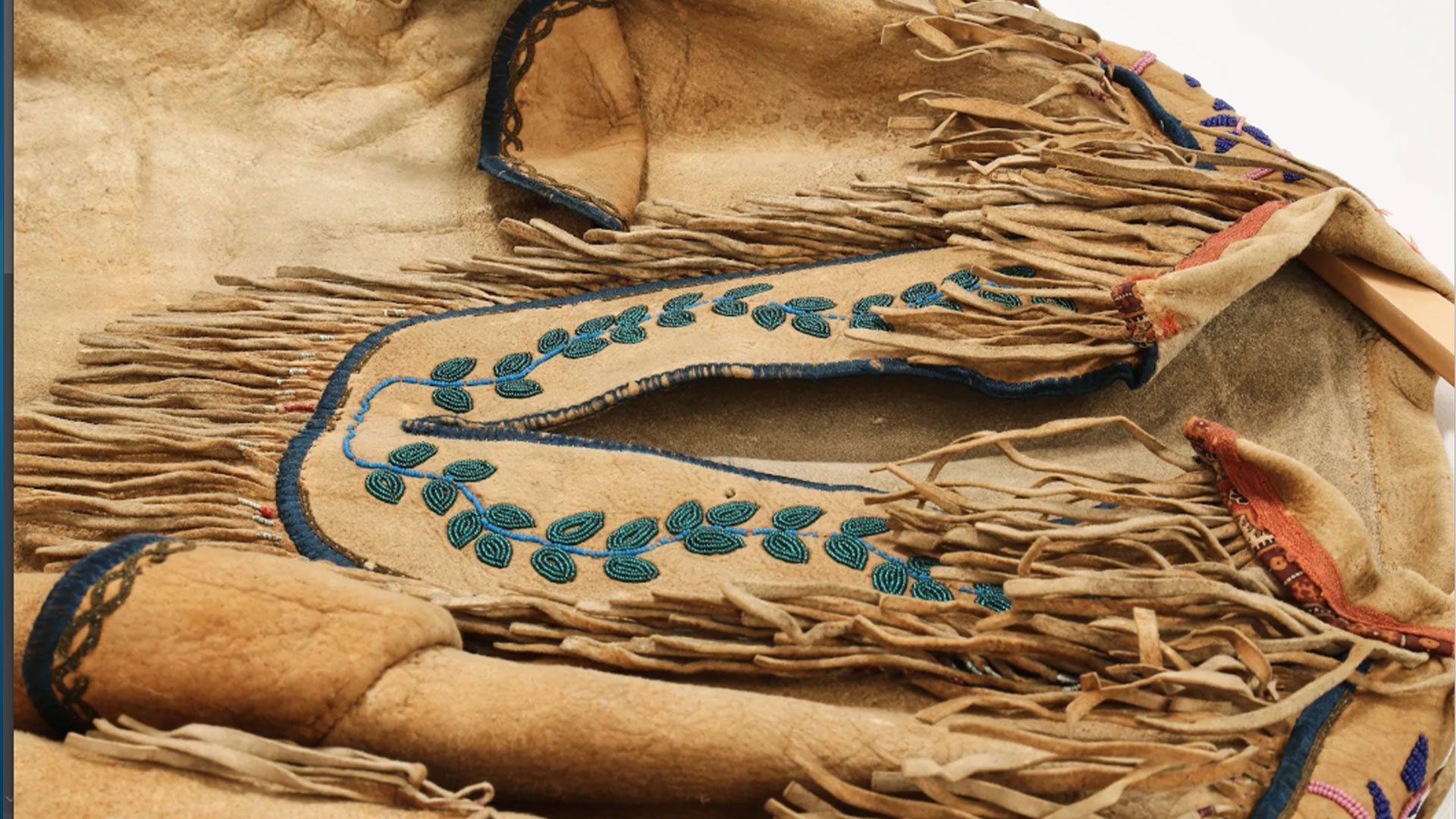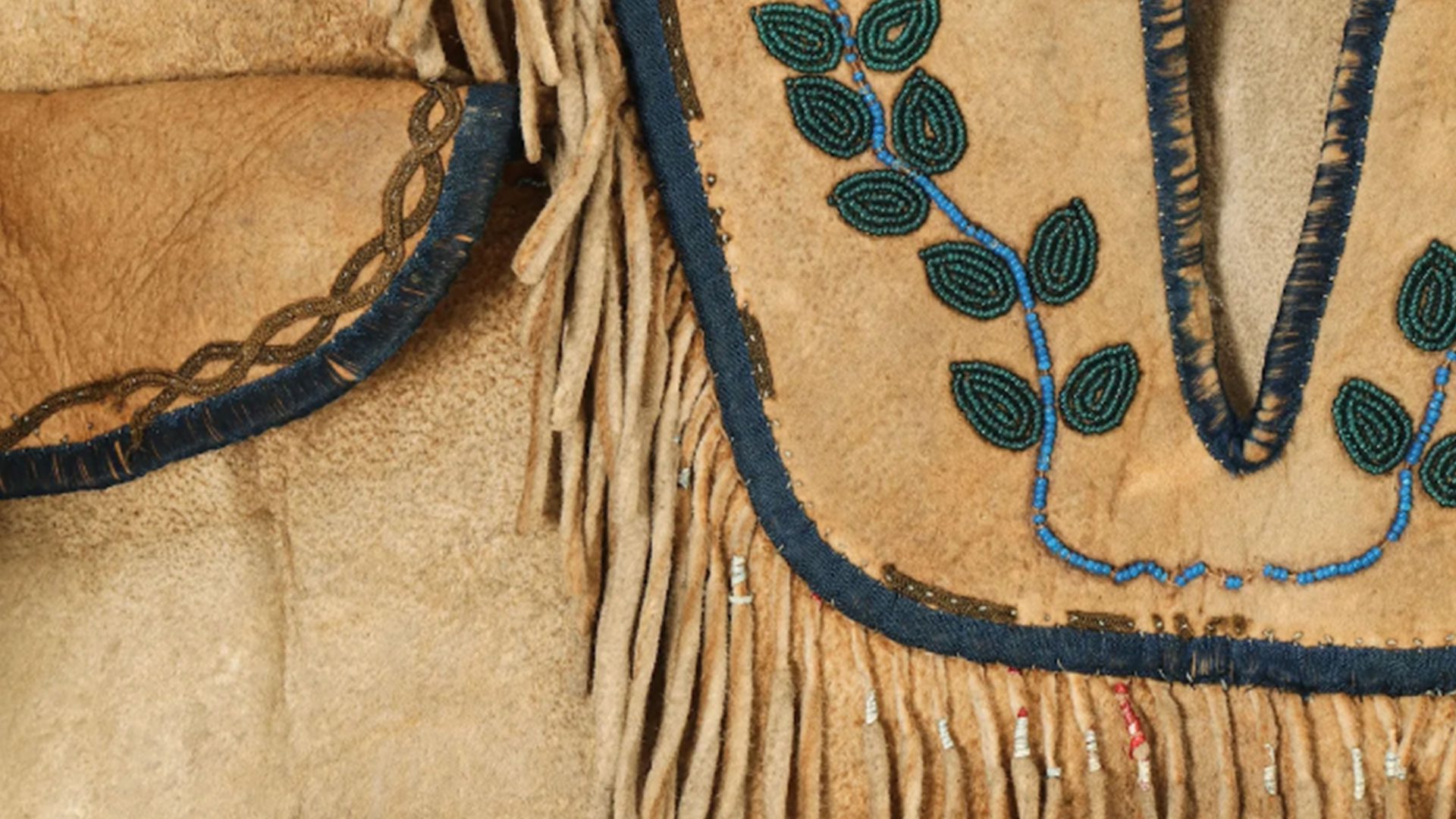
This leather jacket found in the U.K. may have Métis origins. Photo: Glass Onion
A fringed and beaded leather jacket is making headlines around the world after turning up at a second-hand store warehouse in Barnsley, North Yorkshire.
“We’ve been in the vintage business for over 15 years, and have never seen a jacket quite like this one,” said Glass Onion on its blog regarding the Indigenous jacket.
“We instantly knew it would have an amazing story to tell.”
The vintage clothing company in the U.K. traced the origin of the buckskin jacket to Manitoba’s Red River Valley through the viral reach of TikTok and the expertise of cultural curator Maureen Matthews at the Manitoba Museum.
The jacket, which arrived at Glass Onion in a bale of fringed, suede pieces from the U.S., is decorated with beading in the style of the Métis, who were once known as the “flower beadwork people.”
Cindy Desrochers, director of Le Musee de Saint Boniface Museum in Winnipeg, said beading is a cultural practice and art form in Indigenous communities. The Métis are Indigenous people living primarily on the Prairies as well as parts of British Columbia and Northwest Territories.
“This creation is unique,” Desrochers said Tuesday. “I am no expert but the beadwork style resembles things that have been made here.”

Glass Onion said its vintage graders believe the “incredible beadwork and attention to detail” date the jacket at more than 170 years old. It may also be a Cree creation, the outlet said. (Glass Onion’s head of marketing, Alice Leadbetter, couldn’t immediately be reached for comment.)
“Considering the age and distance this jacket has travelled, it’s in great condition,” said the stores’ blog, where it asks the public to contact them with tips on the jacket’s origin.
“It’s clearly been lovingly created and made to last. A lot of hours have gone into researching the jacket’s possible origins, but we’ve been determined to discover its story.”
Desrochers said she’d like to see and feel the pullover jacket and get a closer look at the beads, which appear to be dark green in the photos.
“What I think is interesting is that the beads are all one colour, not like the multi-coloured beading of today.”
The jacket has not yet been assessed in person by a professional, but certain design elements (such as the olive-green chain stitch on the pockets) indicate it was likely made around the 1850s, possibly by an artist for a family member or a fur trader,” the blog continued.
“We believe it’s likely Métis or Cree from Western Canada (Manitoba, Saskatchewan or Alberta). We’ve recently discovered that the fringe tassels are wrapped in dyed porcupine-quills too!”

Sharon Blady of Winnipeg, who wrote her master’s of arts degree thesis on Métis beading, believes the jacket hails from Manitoba.
“I’m glad they’re doing their cultural research to find the answers,” said the former provincial MLA. “Beading is as unique as the woman who made it – and they were usually women who did the beading.”
Blady said wives typically made their husbands a “good” jacket and a “work” jacket to wear on the road. Often the wives’ handmade goods were sold along the way for a bit of extra money.
“In some cases you might – if somebody offered you the right thing – literally sell them the shirt off your back. And I have a funny feeling that is probably how this ended up in England.”
Blady is hoping the jacket will be gifted to Manitoba once the origin is confirmed.
“I think it’s super cool. It’s an awesome piece.”
Glass Onion agrees the goal is to reunite the garment with its community of origin.
“We’re trying not to rush anything and make sure we’re being thorough so we can do right by this special jacket. We’re trying to narrow down the search even further before we make any final decisions,” it said in the blog.
“It feels like we’re not too far away now from uncovering its full story.”










